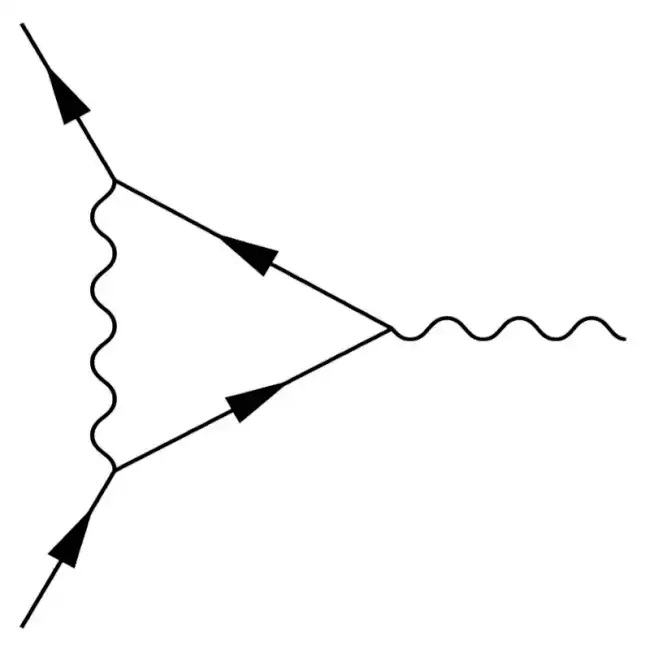Quantum Field Theory
USOS
 This is the mandatory Quantum Field Theory course of the Master in Theoretical Physics at the University of Wrocław. It is tailored towards master and PhD students who are familiar with
This is the mandatory Quantum Field Theory course of the Master in Theoretical Physics at the University of Wrocław. It is tailored towards master and PhD students who are familiar with
- quantum mechanics
- electrodynamics
- special relativity
- quantum electrodynamics.
There are many good books on the subject, four that I like are
- [PeskSchr] Peskin, Schroeder: An introduction to quantum field theory
- [Ryder] Ryder: Quantum Field Theory
- Weinberg: The Quantum Theory of Fields, Volume 1 & 2
- Zee: Quantum Field Theory in a Nutshell.
We will follow mostly the first one in the lectures. There will be 2 hours of lectures and 2 hours of tutorial each week. Exercises will be posted here a week before the tutorial they are discussed in. Please keep in mind that active participation in the tutorials is important to pass the course. M.Sc. Biplab Mahato will be the assistant for the tutorials. Please fell free to contact him () or me if you have any questions. For information about credits points, please refer to the syllabus or contact me directly.
Important: Students will be assigned to exercise problems by the system described here at the Thursday, 9:00 pm, before the tutorial. Please indicate your preferences by then.
Exam: After a majority vote, we decided together that the written exam for this course will take place on Monday, the 3rd of July 2023, at 14:00 in room 447 (the one where we also have our classes). It will take two hours and we will discuss a practise exam in the last tutorial to help you preparing for it. Please be there five minutes earlier such that we can start on time. Also note that you need to have more than 50% of the points from the exercises assigned to you to qualify for the exam. You can check your points here on the website, or, if you are in doubt, with me.
Retake Exam: As discussed via email, you have the chance to take part in the retake exam on Friday, the 8th of September 2023, at 17:00 in room 447. Exactly the same conditions as described for the exam above will apply. If you would like to take part in the retake exam, please send me a quick message via email such that I have an estimated head count and can bring the right number of exams.
Additional material for the individual lectures, including the exercises which we discuss in the tutorials, is given below:
Lectures
- Generating functional, interactions and Feynman rulesTutorial04.04.2023 11:15, exercise
Reading: [PeskSchr] section 9.2
During the lecture and tutorial, there were several questions how to derive the symmetry factors and the Feynman rules directly from the path integral. The simple answer is of course, just expand up to the relevant order. However, this is not completely straightforward and requires a little bit care with combinatorics and Wick's theorem. Therefore, the detailed computation is attached for the propagator in theory. This hopefully helps to resolve the problem.
- Path integral for spin-1 bosons, ghost fieldsLecture18.04.2023 08:15, notesTutorial25.04.2023 11:15, exercise
Reading: [PeskSchr] section 9.4
In the second step of the Faddev-Popov procedure, we discussed during the lecture, we average over different gauge choices . We were using a Gaussian weight factor for this purpose, i.e.
At this point, the question: "Why do we use the Gaussian weight?". My answer: "Because we can compute it." is correct, but one could also use any other weight function and, after much more work, would obtain the same result. There is a nice thread on Physics stack exchange discussion this issue.
- One loop effects in QED: field-strength renormalisation and self-energyTutorial09.05.2023 11:15, exercise
Reading: [PeskSchr] section 7.1
Please take a look at the details for the derivation of the spectral density function, which we did not have time to discuss in the lecture.
- The Callan-Symanzik equation and -functionsLecture30.05.2023 08:15, notesTutorial06.06.2023 11:15, exercise
Reading: [PresSchr] sections 12.2
During the lecture, we noted that the renoramlisation condition used for massless -theory is are quite different from what we used in lecture 10 (see section 7.2 of the notes). The major challenge here is that we are dealing with a massless theory and there is a prori no mass with we can use to introduce a renormalisation scale. To overcome this problem, an imaginary mass is used to fix the renormalisation conditions which holds the physical mass (the real part of ) fixed at zero.
- Gravity, quantum gravity, one-loop -functions of a two-dimensional -model and string theoryLecture07.03.2023 09:15, notesTutorial13.06.2023 11:15, exercise
Reading: David Tong's lecture notes on String Theory section 7.1, original article Phys.Rev.Lett. 45 (1980) 1057
- Spontaneous symmetry breaking and the Higgs mechanismLecture13.06.2023 08:15, notesTutorial15.06.2023 17:00, practise exam
Reading: [PresSchr] sections 11.1 and 20.1
There is no problem sheet for this lecture. In the tutorial, which takes place right after the last lecture, we discuss the practise exam.
- BRST symmetry, physical Hilbert spaceLecture15.06.2023 15:00
Reading: [PeskSchr] section 16.2-16.4
